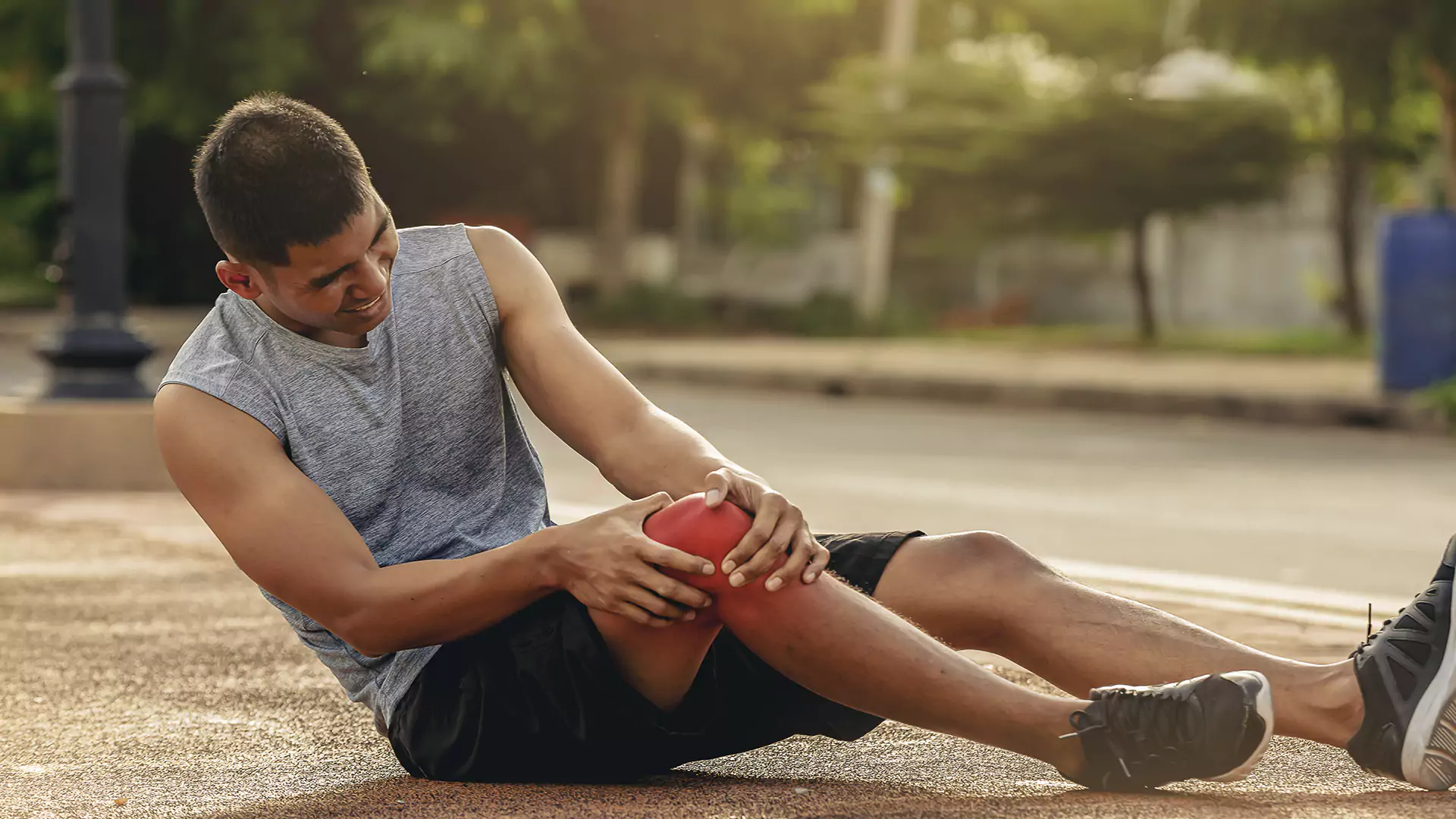MJ Naidu Super Speciality Hospital
- Home
- /
- Sports Injuries
Sports Injuries

One of the Best Orthopedic Hospitals for Sports Injuries in Vijayawada
Types of Sports Injuries:
At MJ Naidu Super Specialty Hospital, we understand the diverse range of sports injuries that can affect athletes and active individuals. Our expertise extends to diagnosing, treating, and preventing these injuries, empowering our patients to recover and continue their active lives.
These are some common types of sports injuries:
Sprains: Sprains happen when ligaments, connecting bone to bone, stretch or tear. These injuries are often seen in sports that involve sudden changes in direction or impact, such as soccer or basketball.
Strains: Strains affect muscles or tendons and result from overstretching or tearing. Overexertion or improper warm-up can lead to strains, making them common in activities like weightlifting and running.
Fractures: Fractures involve the breaking of bones and can range from hairline fractures to more severe breaks. High-impact sports like football and skateboarding can lead to fractures, especially in areas like the wrists, ankles, and collarbones.
Dislocations: Dislocations happen when the ends of bones are forced out of their normal positions within a joint. These injuries are often associated with contact sports like rugby and martial arts.
Overuse Injuries: Overuse injuries result from repetitive stress on a particular part of the body over time. These can include conditions like stress fractures, tendinitis, and shin splints, often observed in long-distance running or activities that involve repetitive motions.
Specific injuries associated with different sports:
ACL Tears (Anterior Cruciate Ligament Tears): Common in sports requiring sudden stops, pivots, and changes in direction, such as football, soccer, and basketball.
Tennis Elbow (Lateral Epicondylitis): Typically seen in tennis players but can also affect those who engage in activities with repetitive forearm motion, such as painting or carpentry.
Golfer’s Elbow (Medial Epicondylitis): Similar to tennis elbow, but it affects the inside of the elbow and is often experienced by golfers and individuals involved in gripping and swinging motions.
Rotator Cuff Injuries: Prevalent in sports involving overhead movements, like swimming, baseball, and tennis.
Runner’s Knee (Patellofemoral Pain Syndrome): Common among runners and athletes involved in jumping and squatting movements.
Achilles Tendonitis: Frequently occurs in sports requiring quick bursts of acceleration, like sprinting or basketball.
Concussions: More common in contact sports such as football, but can also occur in activities like cycling.
At MJ Naidu Super Specialty Hospital, we have a deep understanding of the unique nature of each sports injury and offer specialized care to address these conditions. Our team of experts is dedicated to providing comprehensive evaluation, treatment, and rehabilitation to help athletes and active individuals regain their optimal performance and live a pain-free, active life.
- 24HRS TRAUMA SERVICE
-
24HRS DIGITAL X-RAY / MRI/CT / USG / X-RAY /
DOPPLER /ECHO - 24HRS LABORATORY
- 24HRS PHARMACY
- 24HRS AMBULANCE SERVICE
- INTENSIVE CARE UNIT
- CASUALTY DEPARTMENT
- FULLY EQUIPPED OPERATION THEATER (2 LAMINAR )
Other Services
Best Quality Service
Personalised Care
Experienced Doctors
Competitive Prices
Causes and Risk Factors of Sports Injuries:
Understanding the causes and risk factors of sports injuries is essential for both athletes and active individuals. At MJ Naidu Super Specialty Hospital, we emphasize the importance of recognizing and addressing these factors to prevent injuries and promote long-term well-being.
Here are some common causes and risk factors:
Improper Training Techniques: One of the leading causes of sports injuries is the use of incorrect training techniques. Athletes who do not receive proper coaching or guidance may perform movements and exercises with poor form, increasing the risk of injury.
Overuse: Repetitive movements and overtraining can lead to overuse injuries. Athletes who push their bodies too hard without allowing adequate time for recovery are at risk of developing conditions like stress fractures, tendinitis, and muscle strains.
Poor Equipment: Inadequate or ill-fitting sports equipment can contribute to injuries. This includes improperly fitted footwear, worn-out protective gear, and equipment that does not meet safety standards.
Lack of Warm-Up and Stretching: Skipping warm-up exercises and stretching can lead to muscle imbalances and decreased flexibility. Muscles that are not adequately prepared are more susceptible to strains and tears.
Inadequate Conditioning: Athletes who are not properly conditioned for their sport may lack the strength, endurance, and flexibility required to perform safely. Inadequate conditioning can result from poor fitness levels or insufficient preparation.
Sudden Changes in Intensity: Rapidly increasing the intensity or duration of workouts or sports activities can strain the body and lead to injuries. Gradual progress and proper periodization are essential for injury prevention.
Environmental Factors: Weather conditions, playing surfaces, and other environmental factors can contribute to injuries. Slippery or uneven terrain, extreme temperatures, and poor lighting can increase the risk of accidents.
Biomechanical Factors: Individual differences in biomechanics, such as foot structure and gait, can influence injury risk. Overpronation, for example, can lead to conditions like shin splints.
Age and Gender: Age and gender can play a role in injury risk. Younger athletes may be more susceptible to growth plate injuries, while female athletes can be at a higher risk for certain knee injuries like ACL tears.
Previous Injuries: Prior injuries that have not fully healed or have been improperly rehabilitated can increase the likelihood of recurring injuries in the same area.
Inadequate Rest and Recovery: Athletes who do not prioritize rest and recovery are at risk of cumulative fatigue and are more likely to sustain injuries. Sleep, nutrition, and active recovery techniques are crucial for maintaining overall health.
Recognizing these causes and risk factors is the first step in injury prevention. At MJ Naidu Super Specialty Hospital, we advocate for comprehensive care that includes injury prevention strategies and rehabilitation to help individuals stay active and healthy. Our team of specialists is dedicated to promoting safe and effective training practices, aiding in the timely recovery of injuries, and minimizing the risk of future problems.
Symptoms of Sports Injuries:
Identifying the symptoms of sports injuries is crucial for prompt diagnosis and effective treatment. At MJ Naidu Super Specialty Hospital, we understand that recognizing these signs can lead to faster recovery and the prevention of long-term complications.
These are some common symptoms associated with sports injuries:
Pain: Pain is a primary symptom of sports injuries and can range from mild discomfort to severe, sharp pain. The location and intensity of pain can vary depending on the type and severity of the injury.
Swelling: Swelling, also known as edema, is a common response to injury. It occurs due to an increase in blood flow and the accumulation of fluids in the injured area. Swelling can cause discomfort and may limit joint mobility.
Bruising (Ecchymosis): Bruising results from broken blood vessels beneath the skin’s surface. It often appears as a discolored area around the injury site and is a visible sign of trauma to the soft tissues.
Limited Range of Motion: Sports injuries frequently lead to limited range of motion in the affected joint or limb. This can manifest as difficulty moving the injured area, stiffness, or a sensation of “locking.”
Weakness: Muscle weakness can occur as a result of sports injuries, especially in the muscles surrounding the injured area. Weakness may affect an athlete’s performance and overall function.
Instability: Some injuries can result in joint instability, causing a feeling of “giving way” or a lack of support in the affected joint. This instability can lead to further injury if not addressed.
Numbness or Tingling: Numbness and tingling sensations may occur when nerves are affected by an injury. These symptoms can be indicative of nerve compression or damage.
Heat and Redness: Inflammation often causes the injured area to become warm to the touch and appear red. This is a sign that the body’s immune response is actively working to repair the injury.
Crepitus: Crepitus refers to a crackling or popping sound or sensation when moving the injured area. It can be present in injuries that involve joint or bone damage.
Difficulty Weight-Bearing: Injuries to the lower extremities can result in difficulty bearing weight on the affected limb. This can be a significant indicator of a severe injury, such as a fracture or ligament tear.
Visible Deformity: In some cases, sports injuries may cause a visible deformity, such as a dislocated joint or a bone that is out of its normal alignment.
Loss of Function: A decrease in the ability to perform normal or sports-specific activities is a key indicator of an injury that requires attention.
Recognizing these symptoms is essential for seeking timely medical care and initiating the appropriate treatment. MJ Naidu Super Specialty Hospital’s team of experts is well-equipped to evaluate and address sports injuries comprehensively, ensuring a proper diagnosis and effective management that facilitates a return to an active and pain-free lifestyle.
Diagnosis of Sports Injuries
Accurate diagnosis is a critical step in the treatment of sports injuries, as it guides the choice of appropriate interventions and rehabilitation strategies. At MJ Naidu Super Specialty Hospital, we employ a comprehensive approach to diagnose sports injuries.
Here are the key methods used for diagnosis:
Physical Examination:
A thorough physical examination is the initial step in diagnosing sports injuries. An experienced healthcare provider, often an orthopedic specialist or sports medicine physician, will assess the injured area. They examine the range of motion, stability, strength, and any visible signs of injury, such as swelling, bruising, or deformity. They also evaluate the area for tenderness, pain, and crepitus (cracking or popping sounds).
Imaging Studies:
In many cases, medical imaging is necessary to confirm the diagnosis and assess the extent of the injury.
Common imaging modalities include:
X-rays: X-rays are useful for detecting fractures, dislocations, and bone abnormalities. They provide a detailed view of the skeletal structure.
MRI (Magnetic Resonance Imaging): MRIs are particularly valuable for assessing soft tissue injuries like ligament and tendon tears, muscle strains, and cartilage damage. They offer detailed, high-resolution images of the body’s internal structures.
CT (Computed Tomography) Scans: CT scans provide cross-sectional images and are often used to assess complex fractures and bony abnormalities.
Ultrasound:Ultrasound imaging is another tool for evaluating soft tissue injuries. It is particularly useful for assessing musculoskeletal conditions, such as tendon injuries.
Blood Tests: In some cases, blood tests may be ordered to check for markers of inflammation or specific conditions like gout or rheumatoid arthritis. These tests can provide additional diagnostic information.
Once the diagnosis is established, treatment plans can be tailored to address the specific injury and its severity. At MJ Naidu Super Specialty Hospital, our team of experts is dedicated to providing accurate diagnoses and offering comprehensive, personalized treatment options for individuals seeking to recover from sports injuries and return to their active lifestyles.
To prevent sports injuries, prioritize a thorough warm-up and cool-down routine, incorporating dynamic stretching and mobility exercises. Consistent conditioning, including strength training and flexibility exercises, enhances resilience. Maintain well-fitted and appropriate sports equipment, ensuring its regular inspection and maintenance. Seek professional guidance for personalized training plans, biomechanical assessments, and injury prevention strategies. Listen to your body, and do not ignore early signs of discomfort or fatigue, adjusting activity levels as needed. Stay well-hydrated, maintain a balanced diet, and ensure adequate rest for overall health and injury prevention. Professional advice and proactive measures are essential for safeguarding long-term athletic well-being.

